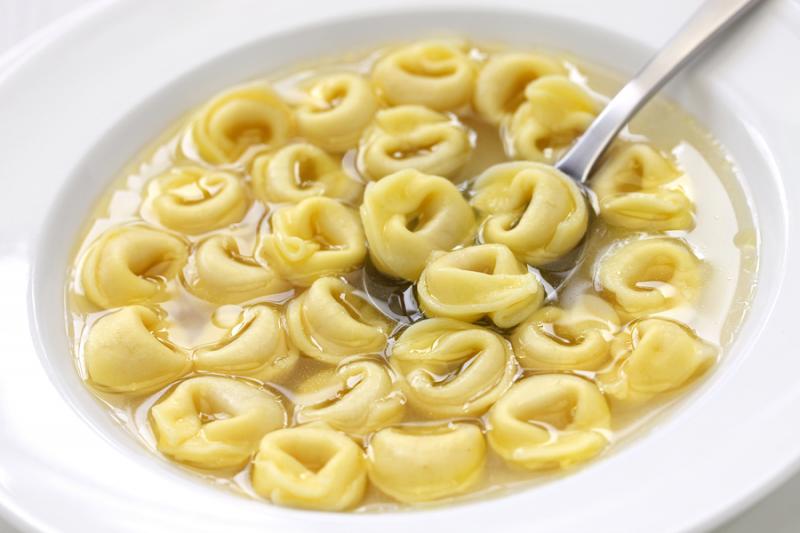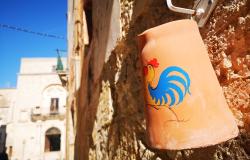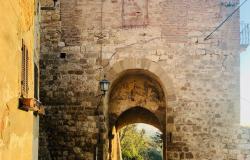Fight the Autumn Chill with Tortellini in Broth
ITA:

Use player to listen to Italian version
Tortellini in brodo is a popular winter dish in Bologna and Emilia-Romagna, where it originated. In the foodie capital of Italy, it is also the traditional first course of the Christmas meal.
In Bologna, they are so serious about tortellini that the official recipe has been registered with the Chamber of Commerce of Bologna by the Italian Culinary Academy and the Dotta Confraternita del Tortellino (Learned Brotherhood of the Tortellino), to safeguard the authenticity of a cherished dish that has become a symbol of Bologna.
In reality, both Bologna and Modena claim to be the hometown of tortellini – in Modena they call them cappelletti.
What we know for sure is that tortellini originated in the Po Valley of Emilia-Romagna thanks to the area’s historic abundance of pork meat and Parmigiano cheese, two of the base ingredients needed for the filling.
In 1550, the Bologna-born chef Bartolomeo Scappi, chef to the pope, wrote down a large number of recipes, including the one for tortellini. About a century later, gastronome Vincenzo Tanara wrote about tortellini cooked in butter. Some scorn that idea today, but tortellini with butter and a sprinkle of Parmigiano Reggiano are still a popular option today.
A legend places the invention of tortellini in Castelfranco Emilia, a town exactly halfway between Bologna and Modena. A diplomatic move!
So what goes in the filling of tortellini?
Here are the ingredients: pork loin, ham, mortadella from Bologna, Parmigiano Reggiano aged three years, eggs, nutmeg flavor. For the pasta, to be rolled by hand with a rolling pin, you need one egg for every 100 grams of flour.
Tortellini should be eaten in capon or hen broth.
For detailed instructions on how to make tortellini, read the recipe here.
I tortellini in brodo sono un piatto tipico della stagione invernale molto diffuso a Bologna e in Emilia-Romagna, dove ha avuto origine. Nella capitale gastronomica d'Italia, è anche il tradizionale primo piatto del pranzo di Natale.
A Bologna, prendono i tortellini così seriamente che la loro ricetta ufficiale è stata registrata presso la Camera di Commercio della città dall'Accademia Italiana della Cucina e dalla Dotta Confraternita del Tortellino, con lo scopo di salvaguardare l'autenticità di un piatto molto amato che è diventato un simbolo di Bologna.
In realtà, sia Bologna che Modena sostengono di essere la città natale dei tortellini - a Modena li chiamano cappelletti.
Quello che sappiamo per certo è che i tortellini hanno avuto origine nella Pianura Padana dell'Emilia-Romagna grazie alla storica abbondanza di carne suina e parmigiano, due degli ingredienti base del ripieno.
Nel 1550, lo chef bolognese Bartolomeo Scappi, cuoco per il papa, annotò un gran numero di ricette, tra cui quella dei tortellini. Circa un secolo dopo, il gastronomo Vincenzo Tanara scrisse di tortellini saltati nel burro. Alcuni oggi disprezzano l'idea, ma i tortellini con il burro e una spolverata di Parmigiano Reggiano sono ancora oggi un'opzione apprezzata.
Una leggenda colloca l'invenzione dei tortellini a Castelfranco Emilia, una città esattamente a metà strada tra Bologna e Modena. Una mossa diplomatica!
Dunque, quali sono gli ingredienti del ripieno dei tortellini?
Eccoli: lonza di maiale, prosciutto crudo, mortadella di Bologna, Parmigiano Reggiano invecchiato tre anni, uova, noce moscata. Per la pasta, da tirare con il mattarello, è necessario un uovo ogni 100 grammi di farina.
I tortellini vanno consumati in brodo di cappone o di gallina.
Per istruzioni dettagliate su come preparare i tortellini, leggi la ricetta qui.











